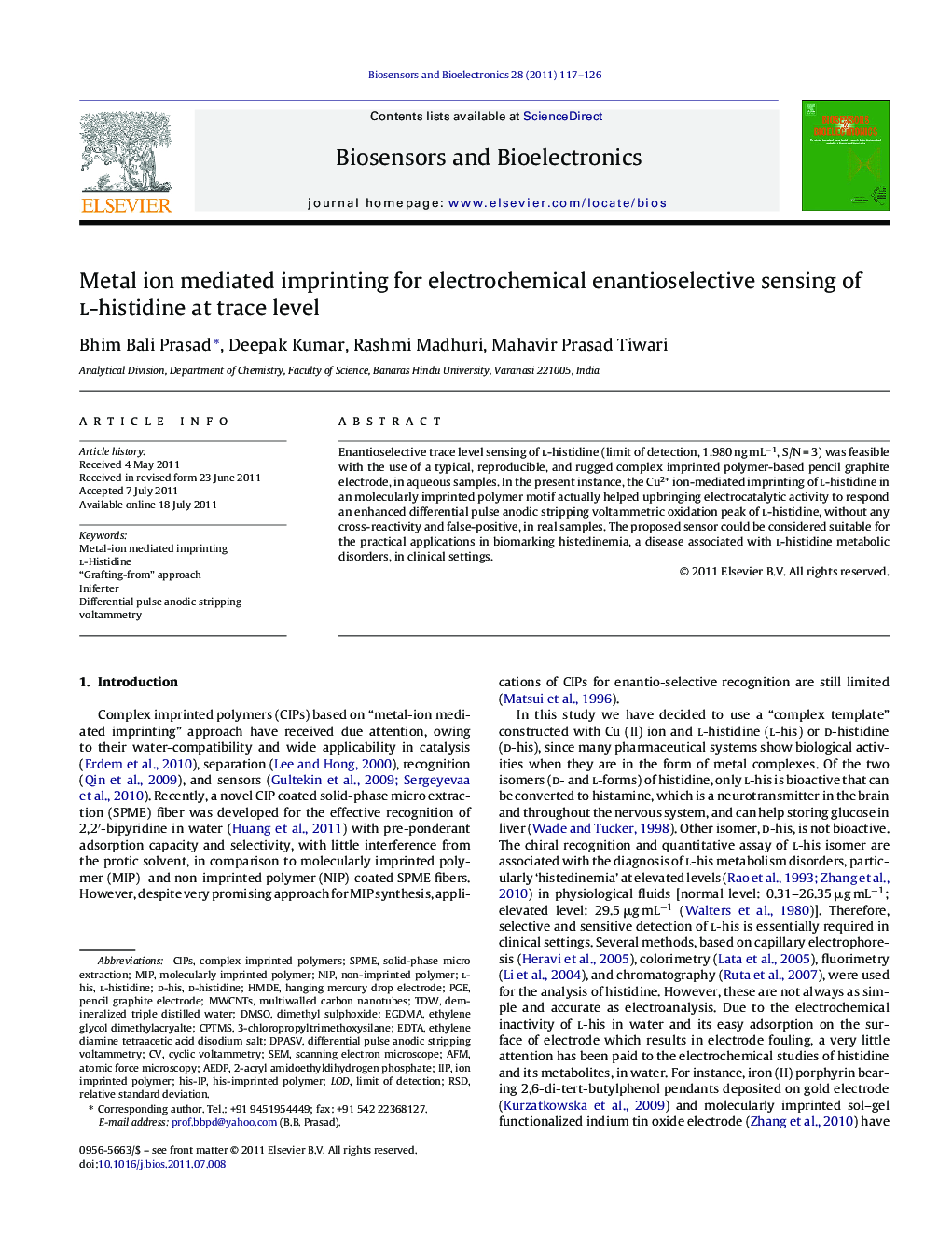| Article ID | Journal | Published Year | Pages | File Type |
|---|---|---|---|---|
| 10429459 | Biosensors and Bioelectronics | 2011 | 10 Pages |
Abstract
Enantioselective trace level sensing of l-histidine (limit of detection, 1.980 ng mLâ1, S/N = 3) was feasible with the use of a typical, reproducible, and rugged complex imprinted polymer-based pencil graphite electrode, in aqueous samples. In the present instance, the Cu2+ ion-mediated imprinting of l-histidine in an molecularly imprinted polymer motif actually helped upbringing electrocatalytic activity to respond an enhanced differential pulse anodic stripping voltammetric oxidation peak of l-histidine, without any cross-reactivity and false-positive, in real samples. The proposed sensor could be considered suitable for the practical applications in biomarking histedinemia, a disease associated with l-histidine metabolic disorders, in clinical settings.
Keywords
NIPTDWSPMEl-hisIniferterDPASVEGDMAethylene diamine tetraacetic acid disodium saltIIPAFMPGEMIPMWCNTsRSD3-chloropropyltrimethoxysilanecIPSDMSOHMDEl-HistidineHanging mercury drop electrodeEDTAPencil graphite electroderelative standard deviationSolid-phase micro extractiondimethyl sulphoxideLodlimit of detectionSEMscanning electron microscopeatomic force microscopyMultiwalled carbon nanotubesCyclic voltammetryDifferential pulse anodic stripping voltammetrynon-imprinted polymerMolecularly imprinted polymerIon imprinted polymer
Related Topics
Physical Sciences and Engineering
Chemistry
Analytical Chemistry
Authors
Bhim Bali Prasad, Deepak Kumar, Rashmi Madhuri, Mahavir Prasad Tiwari,
